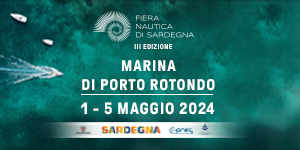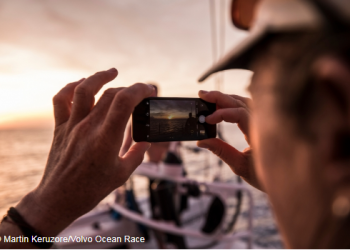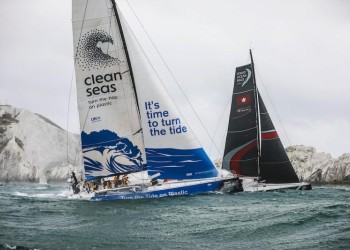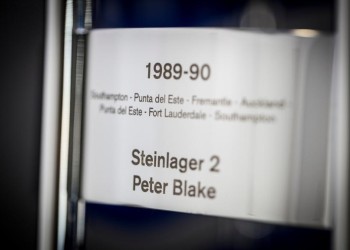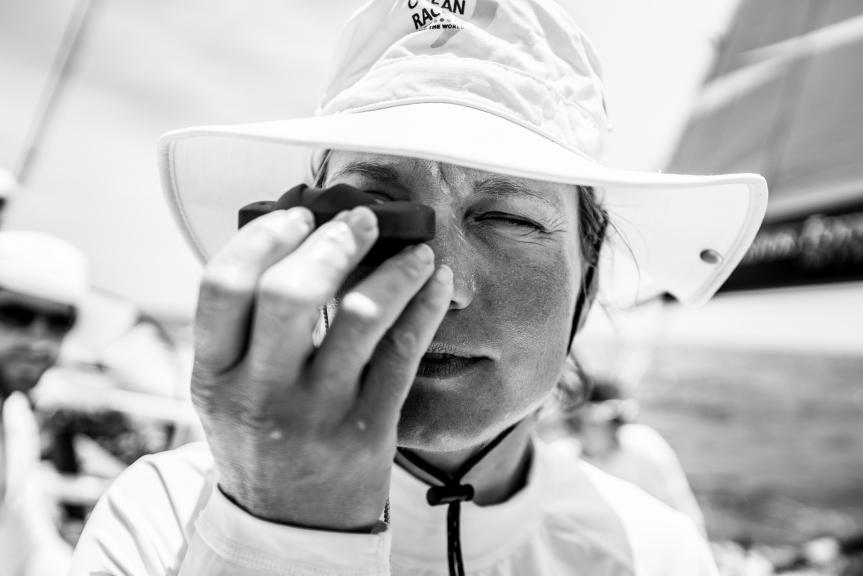
Volvo Ocean Race Leg 4, Elodie Mettreaux, Turn the Tide on Plastic
Volvo Ocean Race, the fleet is using top teams as benchmarks
The fleet has continued to compress over the past 24 hours as the distance between the boats comes down as well as the east-west leverage.
As they have been in the past two legs, Dongfeng Race Team is the early leader, setting the pace as the boats charge north of Brisbane, and now leave the Australian coast.
The two pace-setters for the fleet continue to be Dongfeng and overall race leader MAPFRE, who are slowly emerging as the leader from the 'inshore' group that was 40 miles off the lead 24 hours ago.
Today, at 0700 UTC, MAPRE was just over 7 miles back - a pretty nice day's work.
Due to their performance over the past three legs, the 'red boats', Dongfeng and MAPFRE, are seen as the 'fast boats' and the ones from which the most can be learned.
"To sail with a red boat means you are doing pretty well, to spend the third night at sea gybing alongside a red boat was great. We are currently sandwiched between Vestas and Mapfre and looking for every .2, .4 knot of boat speed," writes Dee Caffari on Turn the Tide on Plastic, as her crew try to stay in touch.
"The hand bearing compass is out taking references to check gains and losses and the binoculars are out checking the set up each boat has. It is these small gains that these two experienced crew has and we are learning. It is great to have a focus and we are trying to stay with these guys."
Just up ahead, a similar story is recounted on team AkzoNobel who have been grinding away within sight of Dongfeng nearly since the start of the leg.
"It’s about learning from them so we can get better and faster,” explained Nicolai Sehested.
“We have two options tactically,” he continued. “We can go for the route we think is fastest and get us to Hong Kong first, or we can stay with Dongfeng even if we don’t agree with what they’re doing. We’ve stayed with them mainly to keep low risk but also to learn from one of the fastest boats in the fleet. We learn the moding... How they sail the boat in different wind strengths. Say in this strength, 15 knots of breeze, they seem to be sailing a little higher to the wind and faster than us. Which means we have to see if that’s a better mode than the mode we’re sailing. We also learn setup wise what sail combinations they have hoisted. And again what wind strength and angles they use for different sails.”
At this point in the Volvo Ocean Race, the learning curve is still steep and those who can adapt and improve have the best chance on the leaderboard.
Next up for the fleet is a break away from the northeast corner of Australia, with the Solomon Islands - which must be left to port - the next mark of the course.





